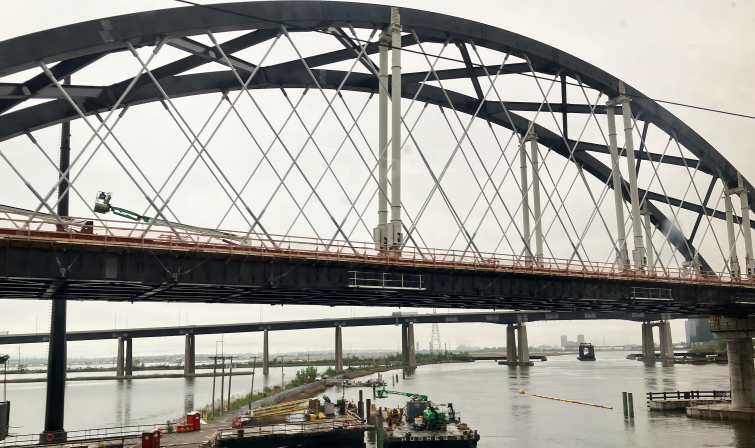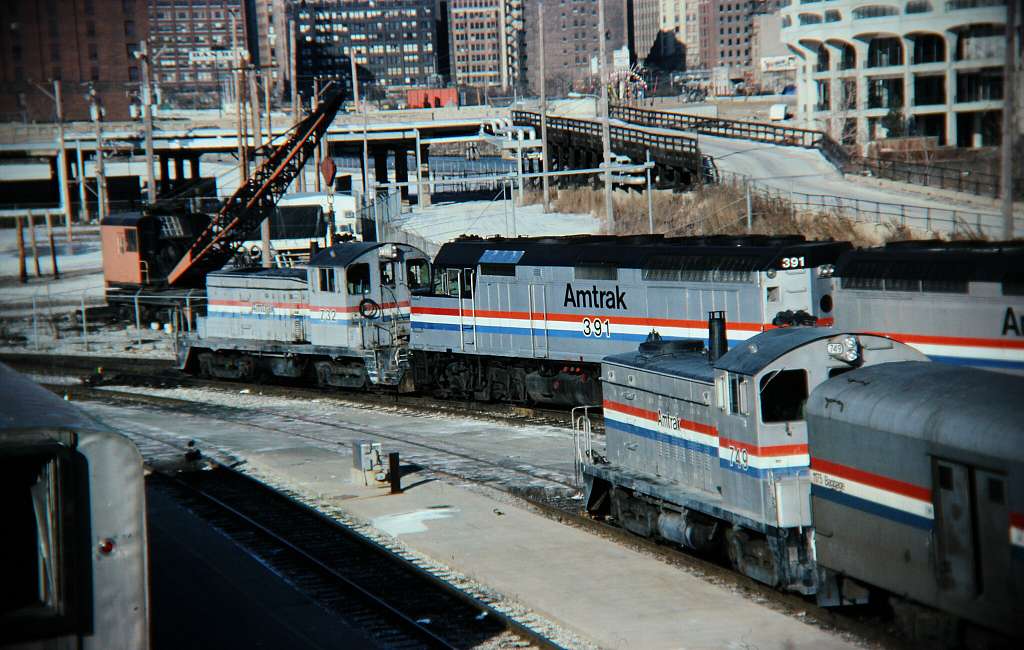Editor's note: a version of this article originally appeared on the Rail Passengers Association blog and is republished with permission.
Well, I guess everyone saw it coming – but learning this week about Amtrak’s massive reductions-in-force, or RIFs, was still a shock. And in my view, it’s another example of Amtrak scoring an “own goal,” cutting the people it needs to manage a growing portfolio of big projects and foolishly focusing on a “profitability” target that is neither possible nor legally required.
I was offsite Tuesday representing Rail Passengers at an all-day meeting of the Surface Transportation Board’s Passenger Rail Advisory Committee when the texts started buzzing on my phone. Texts from good people, experienced people, smart people, brought in to share their deep knowledge and expertise to start making Amtrak better again.
Instead, they were sharing their goodbyes and their personal emails and asking to “stay in touch,” as one often does when you leave your job carrying a cardboard box of mementos instead of a gift and a plaque.
How we got here
In 2021, President Biden signed a law giving Amtrak more money to invest in infrastructure than it had ever had in its bare-bones history – $22 billion set aside just for Amtrak alone out of $66 billion designated for passenger-rail projects nationwide. And for a rail network limping by and underinvested in safe infrastructure for seven decades, it was long overdue.
But, as Amtrak’s Inspector General observed a few months after the Investment in Infrastructure and Jobs Act, or IIJA, was signed, “the sheer size of the IIJA’s funding and requirements could strain the company’s ability to manage its current operations while concurrently planning and managing a long-term multibillion-dollar infrastructure portfolio.”
OIG went on to urge Amtrak to pay close attention to “building and deploying a skilled workforce,” noting that the railroad needed to hire at least 750 new managers in Fiscal 2022 with “highly specialized skills,” and that Amtrak’s creation of its new Capital Delivery department – responding to earlier Amtrak OIG findings of weaknesses in capital delivery – needed to “move expeditiously.”
And so it did, as Amtrak executives heeded the Inspector General’s advice and tried to learn from previous procurement and major capital foibles.
A scant three years after the Inspector General flagged the need for a new, smart, experienced workforce at Amtrak to keep all these new projects moving, Amtrak now decides instead to chop roughly 20 percent of its top-level managers and executives ... before it was even required to do so.
'Let's just get those costs cut'
Combining actual layoffs with a hiring freeze and pausing promotions, the cutbacks total 450 people, which Amtrak’s remaining leadership expects will save about $100 million in annual costs.
The stated reason was “uncertainty” over whether Amtrak would lose support from the new Trump Administration, and company officials quoted in press reports this week said it was partly driven by the Sean Duffy-led DOT’s moves to withhold previously awarded grants, casting doubt on whether the fifth year of the IIJA’s funding would even be awarded.
Never mind that so far the new Congress, fully controlled by Republicans, has demonstrated some willingness to continue to support Amtrak funding, passing a continuing resolution that left Amtrak only minimally bruised.
And never mind that the House Transportation & Infrastructure Committee just passed out their take on the big reconciliation package which, again, more or less left Amtrak unmolested.
And never mind that it’s illegal under the Impoundment Control Act to bypass Congress to withhold funds already appropriated and signed into law.
And never mind that cutting the people who are supposed to manage historically large infrastructure projects will create more opportunities for highly visible project failure, legislative rebuke, and public ridicule.
Nope, let’s just get those costs cut so we can show we can be “profitable," even though that's not something we're expected or required to be.

Bloomberg reported this week that one of the biggest, but not the only, RIF targets was the Capital Delivery department ... the very department stood up to ease the IG’s concerns about waste, fraud, and abuse as Amtrak begins to lead multi-billion-dollar efforts to build new tunnels in New York City and Baltimore, to replace the Susquehanna River Bridge, the Connecticut River Bridge, and so many other important projects.
The procurement team also apparently took a big hit. You know, the people who were going to make sure that the next-generation equipment purchases like the new Acelas, the Airo trainsets, and the long-distance equipment replacement order were taken care of.
Those good, experienced, smart people were playing a vital role in managing billions of dollars’ worth of investments that will address Amtrak’s crippling state-of-good-repair backlog. Amtrak is telling us privately that those tunnel and bridge projects should still go forward, just with fewer people running them. I think that’s a recipe for failure and an irresponsible pennywise pound-foolish approach to a challenge which is largely political rather than programmatic.
Worse yet, if, as is being reported, Amtrak chose to pursue these cuts to achieve operational profitability — a goal not required in any law passed by Congress, during a period of record taxpayer subsidies to the Federal interstate highway system — well, Rail Passengers strenuously disagrees with this decision.
The IIJA represents a meaningful investment in the renewal of our nation’s rail network. However, if we walk away from that investment less than four years after it was passed into law, we will be committing to inefficient and unreliable train service for generations to come.
These cuts have the potential to undermine billions of dollars’ worth of long-term recapitalization efforts, just to save millions in its operating budget. Amtrak only recently announced record levels of ridership and revenue, both nationally and on key State-supported corridors. The American public is best served by Amtrak adopting a strategy of improving its operating ratio by growing service, not by pretending to be a for-profit corporation delivering earnings-per-share at the expense of carrying out the mission Congress set for it nearly half a century ago.
That’s why our Association is calling on Amtrak to provide a high-level explanation to the taxpaying public of why these firings took place at this particular point in time, which departments will be affected, and how these personnel cuts will hurt operations and capital programs.
No more hiding behind “proprietary” or “business-sensitive” hand-waving. The taxpayers who found a way after decades to hand over a guaranteed $22 billion in investment capital to this long-suffering, publicly-supported institution have a right to understand what Amtrak is thinking. Because in my view, Amtrak, you got it wrong.






